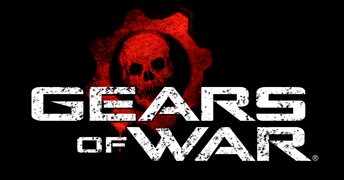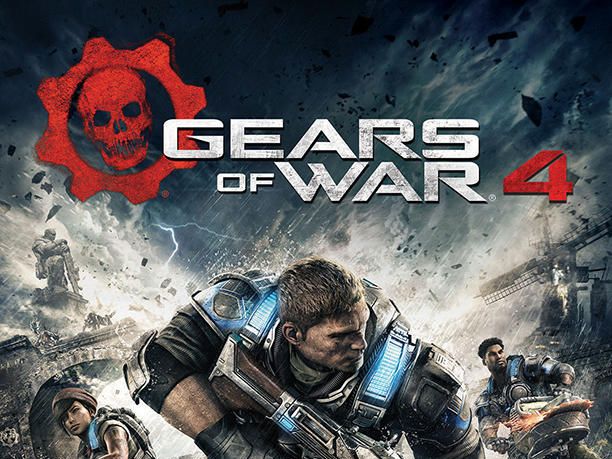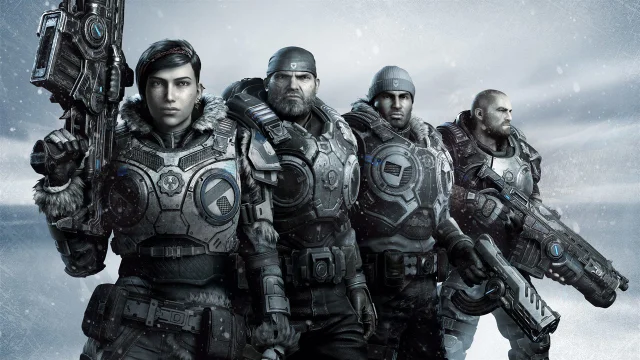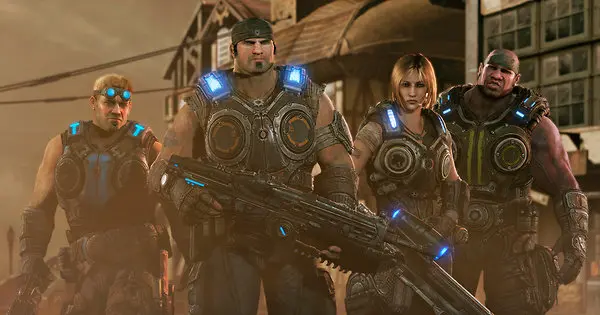Gears of War is one of the most influential and celebrated franchises in the gaming world. Developed by Epic Games and published by Microsoft Studios, the series has left a significant mark on the third-person shooter genre with its gripping narrative, intense gameplay, and groundbreaking multiplayer modes. This article delves into the history, gameplay mechanics, characters, and the lasting impact of the Gears of War series, exploring what makes it a beloved staple in the gaming community.
Historical Background Gears of War
Contents

Origins and Development
The Gears of War franchise was conceived by game designer Cliff Bleszinski and developed by Epic Games. The first game in the series was released in 2006 for the Xbox 360, marking a significant milestone for the console and the shooter genre. The development team aimed to create a game that combined intense action with a compelling story, and they succeeded in crafting a unique experience that resonated with gamers worldwide.
Early Success
Upon its release, Gears of War received critical acclaim for its innovative gameplay, stunning graphics, and engaging story. The game quickly became a commercial success, selling over three million copies within ten weeks of its release. Its success paved the way for sequels and solidified its status as a flagship franchise for the Xbox platform.
Core Gameplay Mechanics
Third-Person Shooter Dynamics
Gears of War is primarily a third-person shooter that emphasizes cover-based combat. Players control characters from a third-person perspective, allowing for strategic positioning and tactical shooting. The cover system is a core mechanic, enabling players to take cover behind objects, peek out to shoot, and move between cover points to avoid enemy fire.
Chainsaw Bayonet and Lancer Rifle
One of the most iconic features of Gears of War is the Lancer rifle, equipped with a chainsaw bayonet. This weapon combines long-range shooting with brutal melee attacks, allowing players to shred through enemies in close combat. The visceral and satisfying nature of the chainsaw kill has become a signature element of the series.
Active Reload Mechanic
The active reload mechanic is another innovative feature introduced in Gears of War. When reloading a weapon, players can perform a timed button press to speed up the reload process and gain a damage boost for a short period. Failing the active reload results in a jammed weapon, adding a layer of risk and reward to the combat system.
Multiplayer Modes
Gears of War has been lauded for its robust multiplayer modes, including competitive and cooperative gameplay. The series offers various multiplayer modes such as Team Deathmatch, King of the Hill, and the popular Horde mode, where players team up to fend off waves of increasingly difficult enemies. The emphasis on teamwork and strategy in multiplayer has helped foster a dedicated and competitive community.
The Gears of War Universe

Setting and Lore
Gears of War is set on the fictional planet Sera, a world ravaged by war and conflict. The story begins with the emergence of the Locust Horde, a subterranean race that launches a brutal assault on humanity. The series explores the desperate struggle of humanity to survive and reclaim their world from the Locust threat.
Main Characters
The series features a memorable cast of characters, each with their own distinct personalities and backstories. Key characters include:
- Marcus Fenix: The grizzled and determined protagonist, Marcus is a former war hero who becomes the leader of Delta Squad. His stoic demeanor and unwavering resolve make him a central figure in the fight against the Locust.
- Dominic “Dom” Santiago: Marcus’s loyal friend and comrade, Dom is driven by a personal quest to find his missing wife. His emotional journey adds depth to the narrative and highlights the human cost of war.
- Augustus “Cole Train” Cole: A former thrashball player turned soldier, Cole brings energy and enthusiasm to Delta Squad. His larger-than-life personality provides moments of levity amidst the grim setting.
- Damon Baird: The team’s tech expert, Baird is known for his sarcasm and mechanical skills. His pragmatic approach often contrasts with the more emotional members of the squad.
- Anya Stroud: Initially serving as a communication officer, Anya later becomes a frontline soldier. Her relationship with Marcus adds a personal dimension to the overarching story.
Narrative and Themes
The narrative of Gears of War is a blend of military linetogel science fiction and horror, exploring themes of survival, sacrifice, and camaraderie. The series delves into the psychological and emotional toll of war, highlighting the bonds formed between soldiers and the impact of loss and trauma. The story evolves across multiple games, revealing deeper layers of the world and its characters.
Evolution of the Series
Sequels and Spin-Offs
Following the success of the original game, the Gears of War franchise expanded with several sequels and spin-offs. Key entries in the series include:
- Gears of War 2 (2008): Enhanced the gameplay mechanics and introduced larger-scale battles and new enemy types. The story focused on the escalating war against the Locust and introduced deeper emotional elements.
- Gears of War 3 (2011): Concluded the original trilogy with a climactic battle against the Locust and the Lambent, a mutated faction. The game featured refined multiplayer modes and the introduction of four-player co-op in the campaign.
- Gears of War: Judgment (2013): A prequel focusing on the character Damon Baird and his squad, offering a different perspective on the early days of the Locust War.
- Gears of War 4 (2016): Marked a new beginning for the series, introducing a new generation of characters, including JD Fenix, the son of Marcus Fenix. The game explored the emergence of a new threat, the Swarm.
- Gears 5 (2019): Continued the story of JD Fenix and his friends, focusing on Kait Diaz’s quest to uncover her connection to the Locust. The game featured expanded multiplayer modes and new gameplay mechanics.
Technological Advancements
The Gears of War series has consistently pushed the boundaries of graphical fidelity and technical innovation. Each new installment has showcased improvements in visual detail, environmental design, and character animations. The use of the Unreal Engine has allowed the series to deliver stunning visuals and immersive gameplay experiences.
Cultural Impact and Legacy

Influence on the Genre
Gears of War has had a profound impact on the third-person shooter genre. Its cover-based mechanics, intense combat, and cinematic storytelling have influenced numerous other games. The franchise set new standards for what could be achieved in terms of gameplay depth and narrative complexity within the shooter genre.
Community and Esports
The Gears of War multiplayer community remains active and passionate. The series’ competitive multiplayer modes have fostered a vibrant esports scene, with tournaments and events attracting top players from around the world. The emphasis on teamwork and strategy in multiplayer has helped build a dedicated and competitive player base.
Expanded Universe
Beyond the games, the Gears of War universe has expanded into other media, including novels, comics, and a planned film adaptation. These additional stories and materials have provided fans with deeper insights into the lore and characters of the series, further enriching the overall experience.
Conclusion
Gears of War stands as a landmark franchise in the gaming world, renowned for its compelling narrative, innovative gameplay mechanics, and memorable characters. From its inception in 2006 to its ongoing evolution, the series has consistently delivered high-quality experiences that resonate with players. The legacy of Gears of War is evident in its lasting influence on the third-person shooter genre and its vibrant community of fans and competitive players. As the franchise continues to evolve, it remains a testament to the power of immersive storytelling and innovative game design in the world of video games.
Read More Article About “Caipirinha: The Brazilian Experience in a Glass – History, Ingredients, and How to Make It“


